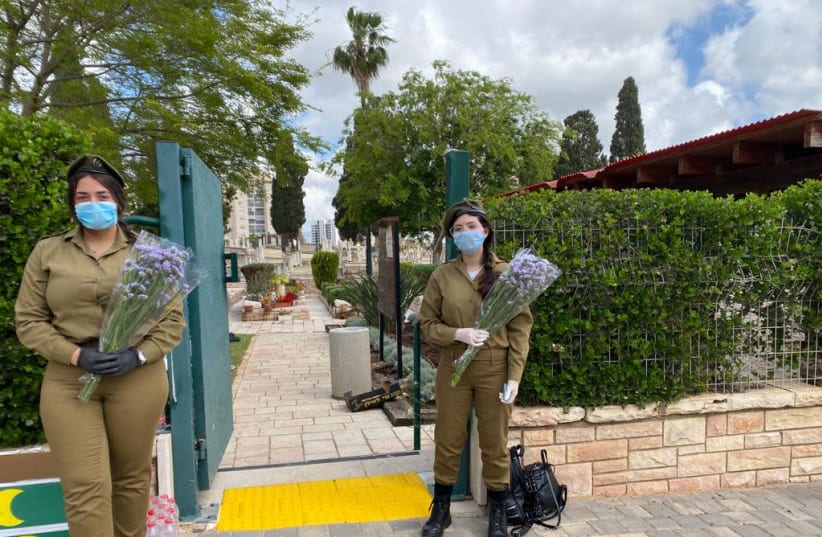It will be a far less vibrant Israel than usual that will stand at attention Monday evening at 8 p.m. when a siren wails ushering in Remembrance Day for the Fallen of Israel's Wars and Victims of Terrorism.
The bustling country comes to an abrupt, poignant stop for a minute when the siren sounds at night, and another two minutes again at 11 a.m. the next morning. These are stunning moments, quintessentially Israeli moments. Before the siren: cars speed by and people walk and talk on crowded streets. During the siren: a moment of eerie stillness. After the siren: the bustle returns.
This year, because the coronavirus has significantly reduced activity on the streets, the change will not be as marked as it has been in years past. The streets are already much quieter than usual. Nevertheless, the debt the country owes to those to whom it is paying respects remains as strong today as ever.
Regardless of how many cars on the Ayalon Highway will come to a screeching halt this evening and tomorrow morning, regardless of the fact that tens of thousands of people will not –because of the virus – be able to visit the graves of their loved ones, the fallen will be remembered in the hearts and homes of millions of Israelis able to live, flourish and thrive in the first independent Jewish state in 2,000 years thanks to the sacrifice of those who fought and died for it.
Twenty-three thousand, eight-hundred and sixteen is the number of people who have fallen for Israel since 1860, a landmark date in Jewish efforts to re-settle Zion since it was the year when Jews first moved out from beyond the protective walls of Jerusalem's Old City.
Aharon Hershler, a 23-year-old yeshiva student who moved as a boy with his family to Jerusalem from Hungary in 1850, was killed beyond the Old City walls by Arabs in Jerusalem in 1873. He is the first fatality on the Defense Ministry's list, a list that sadly grew by 42 people since last year.
The government committee established in 1951 to recommend a day to memorialize the fallen soldiers was very wise in placing it a week after Holocaust Remembrance Day, and immediately before Independence Day. They were wise in so doing even though this meant placing the country every year on an emotional whip-lash ride from the joy of Passover to the sorrow of Holocaust Remembrance Day, to more sorrow on Remembrance Day for the Fallen of Israel's Wars, and then back again to the joy of Idependence Day.
Yet sandwiching Memorial Day between Holocaust Remembrance Day and Independence Day gives crucial historical context.
The number 28,816 is a number almost too heavy to bear. Each individual is a world snuffed out, a lost life of unfulfilled hopes, promises, joys and delights. It is a huge number, 28,816, a depressing number. It is a number, however, dwarfed by the Holocaust.
In the ghastly days of August to October 1942, at the height of the diabolical plan to exterminate Polish Jewry named Operation Reinhard, some 15,000 Jews were killed each day. In other words, it took the Nazis less than two days to kill the number of Jews who have fought, died and been killed for Israel over the last 160 years.
Does that lessen the pain? Not an iota. The loss is frightful, and for each family impacted, it is unbearable. But the context is important. Like the siren, these figures also constitute a dramatic before and after moment: before Jewish independence, and after.
And just as placing Remembrance Day so close to the day set aside to commemorate the victims of the Holocaust is full of historical significance, so too is the fact that it was placed on the day before Independence Day. The message is simple but important to hammer into the nation's conscience: without those soldiers who fought – indeed, without those soldiers who continue to fight today – there would be no independence. It's as simple as that.
In most countries around the world, national memorial and independence days are not placed side by side. In Israel, however, it could be no other way: this juxtaposition is a constant and necessary reminder never to take Jewish independence for granted.
